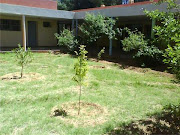Thursday, November 6, 2008
Learning Styles
This video is about learning styles and the different ways people learn.
Because people learn best in different ways, it is important when studying to
take into account your preferred way of learning. There have been several
models developed by psychologists to help us understand how we learn.
The one we will take about today is called the “VAK” model and divides all
people into three categories: visual learners, auditory learners and
kinesthetic learners.
Visual learners learn by seeing things. You can explain something to them
over and over but until they actually see it with their own eyes, they may not
get it.
Other people are much more able to remember and understand what they
hear. They may not understand something shown to them in pictures until
someone explains it to them. These people are called auditory learners.
They learn by hearing.
Finally, there are those who like the hands-on approach to learning. They
never really understand something until they get a chance to use it somehow.
They are kinesthetic learners. They learn by doing.
It is very helpful to know what your own preferred learning style is so that
you can personally tailor your study strategies with your learning style in
mind. This makes it an important tool in getting the most out of your study
time.
When you figure out what your own preferred learning style is, you can
implement specific study strategies to make your study time more effective.
For a visual learner, effective study strategies could include:
- drawing diagrams
- mind-mapping
- flashcards
- create a mental picture of the material using visual imagery
- rewriting professors notes in your own words
An auditory learner would find completely different strategies helpful, which
might include:
- taping lectures for review later
- having discussions with other students
- reading things out load (softly, to yourself)
- tutoring other students to reinforce knowledge
- participating in classroom discussions
For a kinesthetic learner, it is important to be involved in every step of the
learning process, and to have a chance to use concepts in a practical
environment. This might include:
- underline or highlight text with different colors
- reteach the topic to your group
- repeat answers while you are walking or jogging
- create practice tests for yourself
I would encourage all of you to take some of the many online quizzes that
help you determine your learning style. They don’t take much time to
complete and they could result in changing for the better the very way you
approach your education.
Sunday, November 2, 2008
Subscribe to:
Comments (Atom)
.jpg)
.jpg)

.jpg)
.jpg)





